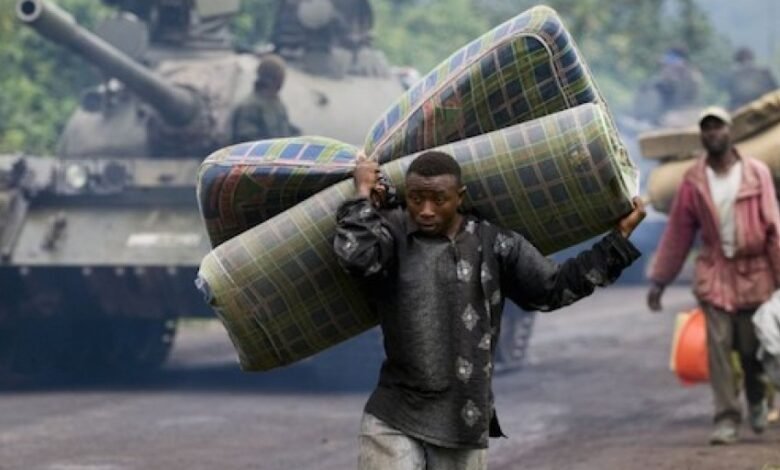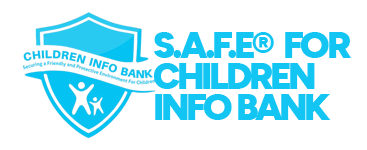Children in Crisis: Upholding Their Rights Amid War, Conflict, and Displacement

“Every child has the right to be protected – even in the worst of times.”
— UNICEF
Introduction
In today’s world, wars are no longer fought solely on battlefields, they are fought in classrooms, hospitals, refugee camps, and homes. And too often, our precious children bear the brunt. Whether in Gaza, Sudan, Ukraine, Syria, Ethiopia, Myanmar, or Northeast Nigeria, millions of children are trapped in violence not of their making, bombed in their beds, recruited as soldiers, separated from their families, and deprived of their rights to education, health, protection, and survival.
According to UNICEF, an estimated 468 million children live in conflict zones, with more than 43 million forcibly displaced. These children are not only at risk, they are in urgent need of protection, humanitarian assistance, and legal safeguards.
The Reality on the Ground
In times of war, humanitarian disaster, and displacement:
-
Children are recruited by armed forces and used as fighters, spies, suicide bombers, and sex slaves.
-
Girls face sexual violence, exploitation, and forced marriage as survival mechanisms.
-
Schools and hospitals are bombed, violating their sanctity as civilian spaces.
-
Access to food, water, and healthcare collapses, leading to malnutrition, disease, and death.
-
Psychosocial trauma, PTSD, and depression scar children for life.
Despite global outrage, the protection of children is often the first casualty of war.
Legal and Humanitarian Safeguards
Children in emergencies are protected by a robust framework of international and regional laws. Yet, gaps in enforcement, political will, and humanitarian access persist.
1. United Nations Convention on the Rights of the Child (UNCRC, 1989)
The UNCRC is the cornerstone of children’s rights. It has been ratified by 196 countries, including Nigeria.
Key articles applicable in conflict:
-
Article 6 – Every child has the inherent right to life.
-
Article 19 – Protection from all forms of violence.
-
Article 22 – Special protection for refugee children.
-
Article 38 – States must take all feasible measures to protect children from armed conflict.
-
Article 39 – Recovery and reintegration of child victims of neglect, exploitation, or armed conflict.
UNICEF uses the UNCRC as its foundational tool in shaping child protection interventions globally.
2. International Humanitarian Law (IHL)
Under the Geneva Conventions (1949) and Additional Protocols, children are entitled to:
-
Protection as civilians, unless actively participating in hostilities.
-
Access to humanitarian aid, even in enemy-occupied territories.
-
Preservation of schools, hospitals, and cultural institutions.
-
Prohibition on recruiting children under 15 into armed forces.
Importantly, “Even war has limits” is a core principle of IHL. Warring parties are legally obligated to distinguish between civilians and combatants and to protect children.
3. African Charter on the Rights and Welfare of the Child (ACRWC, 1990)
Africa’s own child rights charter expands protection beyond the UNCRC:
-
Article 22 – Prohibits child recruitment into armed groups.
-
Article 23 – Mandates special protection for internally displaced and refugee children.
-
Article 11 – Upholds education rights, even in emergencies.
Unlike the UNCRC, the ACRWC raises the minimum age of recruitment to 18, aligning with global child protection standards.
4. Child’s Rights Act (CRA), Nigeria (2003)
Nigeria domesticated the UNCRC and ACRWC through the CRA, which provides:
-
Section 4 – Right to life, survival, and development.
-
Section 15 – Right to free and compulsory basic education.
-
Section 26 – Emergency protection measures for children.
-
Section 28 – Prohibition of child involvement in armed conflict.
-
Section 30–32 – Protection from sexual abuse, trafficking, and exploitation.
However, not all Nigerian states have adopted the CRA, a major setback for uniform child protection.
5. UNICEF’s Role in Child Protection During Crisis
UNICEF is the world’s leading humanitarian agency for children, operating in over 190 countries. In emergencies, UNICEF provides:
-
Safe Water, Food, and Health Services
-
Psychosocial Support & Trauma Healing
-
Child-Friendly Spaces and Emergency Education
-
Family Tracing and Reunification
-
Monitoring and Reporting Mechanisms (MRM) for grave violations
-
Advocacy to governments and non-state actors to cease attacks on children
In Nigeria, UNICEF works in conflict zones like Borno, Adamawa, Yobe, Benue, and Zamfara, reaching displaced and vulnerable children with life-saving services.
Grave Violations Against Children in Conflict (per UN Resolution 1612)
The UN identifies six grave violations:
-
Killing or maiming
-
Recruitment or use of children by armed forces or groups
-
Sexual violence
-
Attacks on schools and hospitals
-
Abduction
-
Denial of humanitarian access
UNICEF and partners monitor these violations under the Children and Armed Conflict (CAAC) agenda to ensure accountability and advocacy.
Children in Northeast Nigeria
-
Over 8.4 million children affected by Boko Haram insurgency.
-
Thousands of boys conscripted as fighters; girls used as “wives” or bombers.
-
Schools attacked or destroyed, causing educational breakdown.
-
Unaccompanied minors in IDP camps vulnerable to abuse.
-
Inadequate access to mental health care and reintegration programs.
Despite signing the Safe Schools Declaration, implementation remains weak in Nigeria’s hardest-hit states.
Recommendations
Government:
-
Train military and humanitarian actors in child rights and IHL.
-
Allocate emergency budgets for child protection units.
-
Prosecute those who violate child rights in conflict zones.
Humanitarian Agencies:
-
Scale up emergency education, safe spaces, and mental health services.
-
Ensure cross-border protection for refugee children.
-
Improve coordination in multi-agency responses.
Communities & CSOs:
-
Promote community-based child safeguarding systems.
-
Work with faith leaders to de-stigmatize survivors of rape or abduction.
-
Conduct grassroots awareness on children’s rights in emergencies.
Conclusion
Every child regardless of geography, religion, or ethnicity deserves a life free from violence, abuse, and exploitation. In emergencies, children must be seen not just as victims, but as rights-holders protected by law and conscience. We must rise beyond empathy to accountability. Beyond charity to justice. Because protecting children in crisis is not optional, it is a legal and moral obligation for all humanity.





